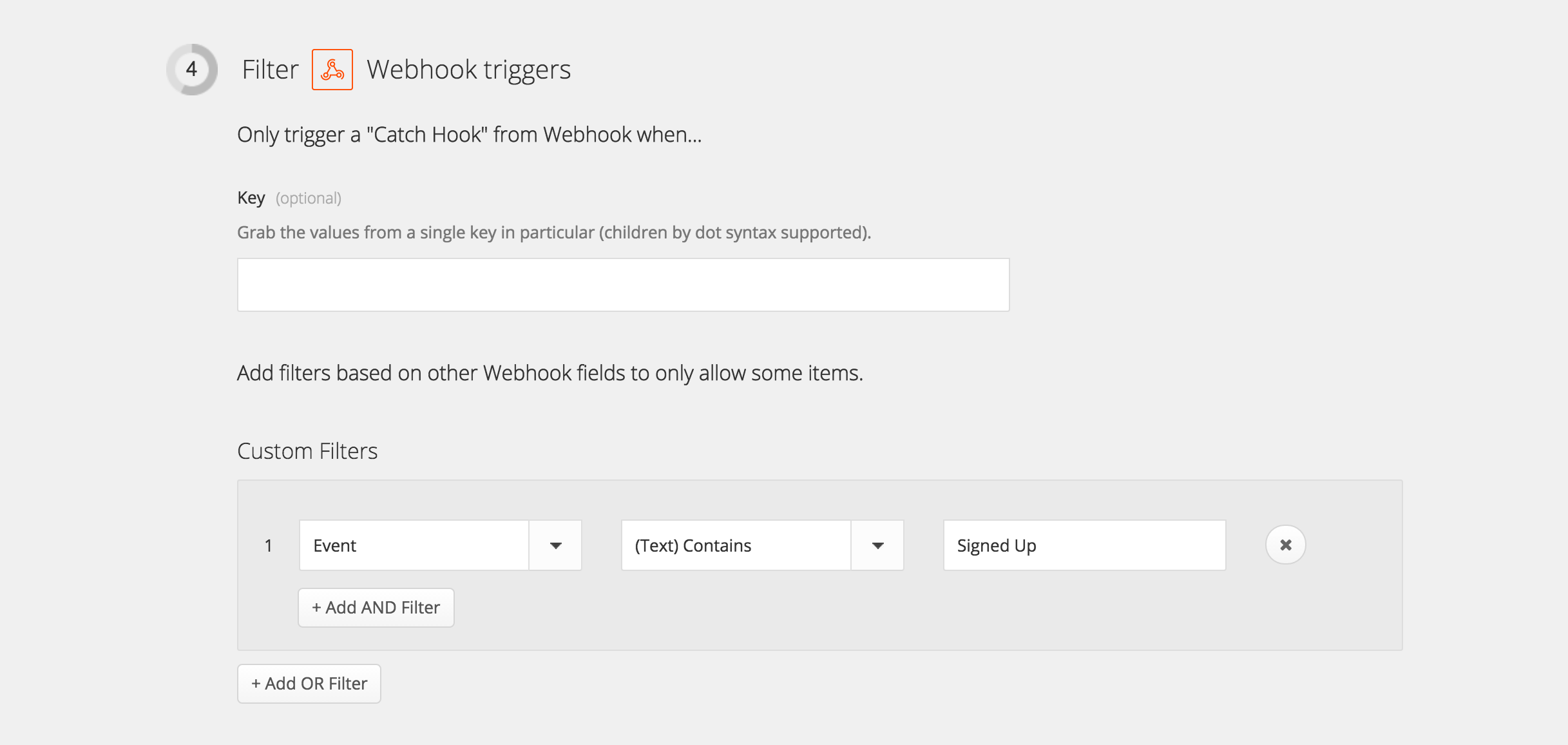Yes, we all know that Slack is currently taking over the world. Those wise enough will understand that it is better to embrace our soon to be Overlords, instead of putting up futile resistance. This step-by-step post will show you how to receive real-time, easily digestible, customer event data in Slack with Segment and Zapier.
Note that Segment now supports a direct Slack integration!
1. Create a new Zap!

First things first. Sign up for a Zapier account (free 14-day trial) and head over to create a new Zap. Then, set the trigger app to be 'Webhook' and the action app to be 'Slack'.
2. Take the webhook URL and paste it in your Segment Webhooks integration

After choosing Webhook in Zapier, it will provide you with a unique URL endpoint. Copy and paste that in Segment's Webhooks integration. Then select the Slack account you want to use for this Zap (it'll auth you into Slack and let you select one).
3. Set the filters for your Webhook triggers

The filters here will determine which events generated by Segment will be sent into your Slack channel. In the example screenshot above, I will only send Segment events where the event name contains "Signed Up" to Slack. There is an incredible degree of flexibility here, as you can create complex filters that will only post to your Slack channel if something happens that requires a human. Some useful ideas are:
- event names in your conversion funnel ('Signed Up', 'Completed Order', or other high value event)
- event names where your customer needs human attention ('Abandoned Cart', 'Submitted Talk-To-Sales Form')
4. Select the Slack channel and format the message

Choose which channel to send it and format the message. In this section of creating the Zap, you can also modify the username, image, etc. of the Zap (how it would appear in the Slack channel). Once you are done here, you can test the Zap, and then turn it on!
5. Get notified in Slack!

Boom! Again, you can make this integration as simple or as complex as you'd like. Zapier gives a fair bit of flexibility in the filtering of the triggers, which can be powerful for a team to stay on the pulse of the customers using its app.
And there you have it. Any suggestions, ideas, or comments, please let me know on Twitter!